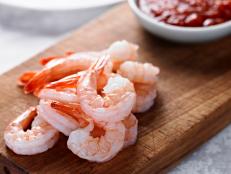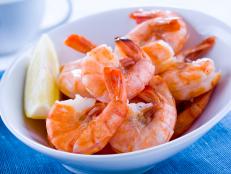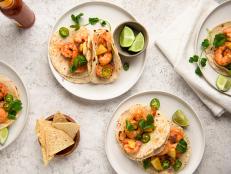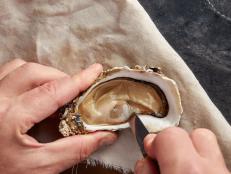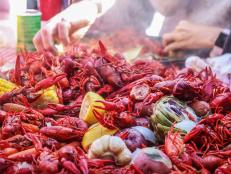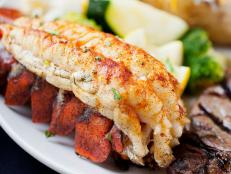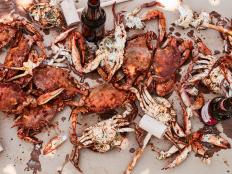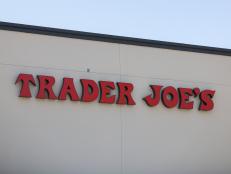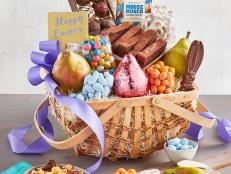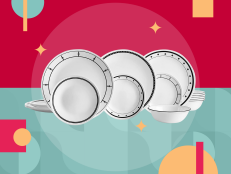How to Cook Scallops
Shop, prep and sear scallops like a pro.
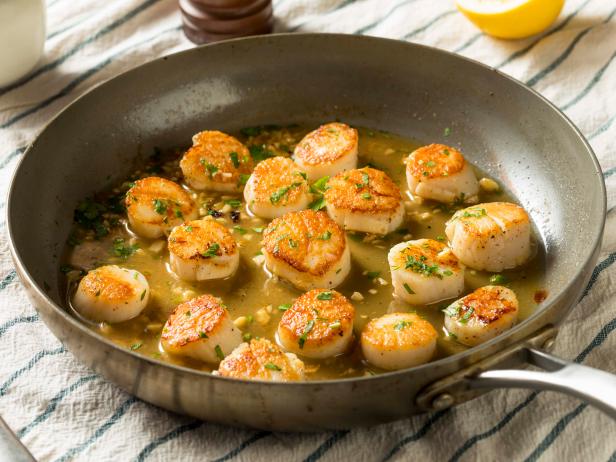
bhofack2/Getty Images
By Layla Khoury-Hanold for Food Network Kitchen
Layla Khoury-Hanold is a contributor at Food Network.
Cooking scallops can seem intimidating, especially since they tend to be a pricey protein. But rest assured, once you practice a few key techniques, you’ll be a scallop-cooking pro in no time. Once you do, you’ll celebrate scallops quick-cooking properties—making them equally suited to weeknight suppers and special occasion feasts alike. Here, we answer your most pressing scallop questions, from how to shop for scallops to our favorite scallop recipes.
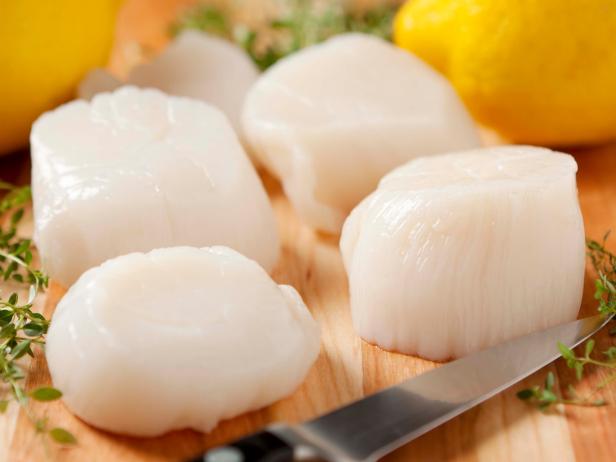
boblin/Getty Images
What Is a Scallop?
Scallops are a type of shellfish that are part of the bivalve mollusk family. Scallops, like other mollusks such as oysters, mussels and clams, contain an interior muscle surrounded by two shells. Inside its wavy, fanned-out shell, scallops have an adductor muscle that helps open and close the shell; this round, usually white-hued muscle, is the part that we eat. Scallops also contain a bright orange part called the coral, which is edible but less widely consumed in the U.S.
What Does a Scallop Taste Like?
Scallops have a sweet, slightly briny taste and delicate, smooth texture. Bay scallops tend to have a slightly sweeter flavor profile than sea scallops.
Shopping for Scallops
Dry Scallops vs. Wet Scallops
Wet scallops are soaked in a solution of water and sodium tripolyphosphate solution to extend their shelf life and retain moisture. But this makes the scallops water-logged and difficult to sauté and brown, plus the solution can impart an unpleasant soapy taste. Ask for “dry” scallops, which are chemical-free, taste better and easier to cook.
Bay Scallops vs. Sea Scallops
Seasonally available bay scallops are smaller, more tender and sweeter than sea scallops, which are available year-round and can be moer than quadruple the size.
Bay scallops are available seasonally in the summer, are smaller in size (roughly the size of a dime or pencil eraser), more tender and often sweeter. Since Bay scallops are smaller, they cook more quickly and are therefore best suited to cooking methods such as sauteing, broiling or poaching.
Sea scallops are available year-round and are larger in size (up to two inches), making them conducive to stovetop searing or grilling, and have more of a sweet-briny flavor.
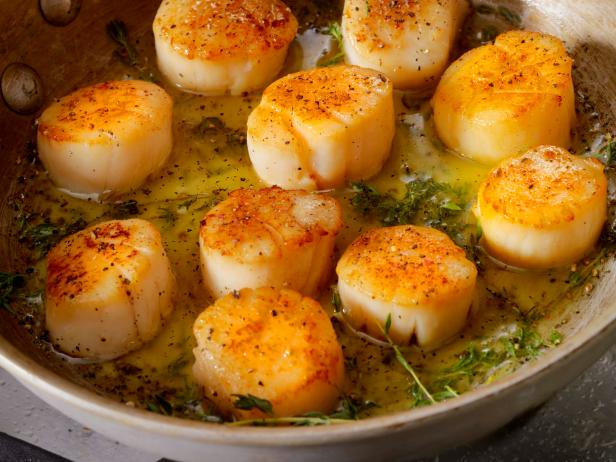
LauriPatterson/Getty Images
How to Sear Scallops
Because sea scallops have a chewier texture, searing them in a hot skillet is the simplest, most effective cooking method to achieving a crisp exterior and tender, just-firm texture within. Basting the scallops with butter helps finish cooking them and enhances browning, too. Follow the technique in this Lemon Butter Seared Scallops recipe for perfectly seared scallops every time.
1: Remove the Side Muscle
Scallops have a side-muscle that needs to be removed prior to cooking. It’s a fibrous, rectangular or crescent-shaped piece of tissue located on the side of the scallop. To remove, pinch the flap between your thumb and pointer finger, and pull it away.
2: Dry the Scallops
Place the scallops on a paper towel-lined plate or sheet tray and pat dry (this helps ensure browning). Season the scallops with a sprinkling of salt and pepper.
3: Sear Scallops on First Side
Preheat a large nonstick saute pan on medium-high heat, then add olive oil and heat until shimmering. Add the scallops in a single layer and sear on one side until golden brown, 1 to 2 minutes.
4: Flip and Baste In Butter
Gently turn the scallops over and add a big pat of butter, basting the scallops by gently spooning the melting butter over the top, for 2 to 3 minutes. Remove the scallops from the heat.
How Long to Cook Scallops
Scallops are quick-cooking shellfish, so it’s key not to overcook them or they’ll dry out. Generally, sea scallops take between 3 and 5 minutes to cook. How to know when scallops are done cooking? They’ll be golden brown on both sides, just-firm at the edges and opaque and succulent in the center.
How to Cook Frozen Scallops
If you’re working with frozen scallops, it’s best to thaw them first and thoroughly pat dry. You can cook them from frozen, but since most frozen seafood is packed with water, the scallops will thaw as they cook—this extra moisture can inhibit browning and yield a mushy texture.

What to Serve with Scallops
Think of scallops as you would any other protein and swap them into your favorite dishes. Scallops pair particularly well with pasta, such as Scallop Scampi or Bucataini with Clams and Scallops. Trying making scallops the star protein on your next salad, as with this Thai Scallop Salad or Scallops with Watercress Salad. Because of their briny-sweet flavor profile, scallops pair well with citrus, and their succulent texture goes well with delicate grains; these recipes, Lemon Orzo with Scallops and Scallops with Citrus and Quinoa, combine both beautifully. Like most proteins, scallops pair well with sides such as grain salads or vegetable purees, like these Scallops with Parsnip Puree (pictured above).
Recipes for Scallops

Scallops might seem fancy, but since they cook quickly, they’re totally doable on a weeknight. Here, scallops are seasoned with coriander and orange zest, then grilled on oiled grates for about 2 minutes per side—watch closely to ensure they don’t overcook and dry out.
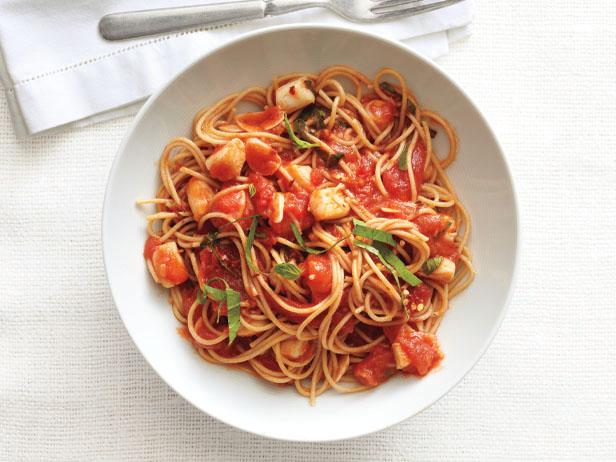
Christopher Testani
Diminutive bay scallops lend themselves to being simmered in homemade marinara sauce, taking on flavor as they cook. They take just 5 minutes—you’ll know they’re done once they turn opaque in color.

RYAN DAUSCH
Fried sea scallops are a perfect match for a crisp, refreshing fennel salad. Medium sea scallops are tossed in buttermilk, dredged in a cornmeal mixture, then fried in batches till golden brown. The coating keeps the scallops moist as they fry, yielding a crispy exterior that gives way to a succulent interior.
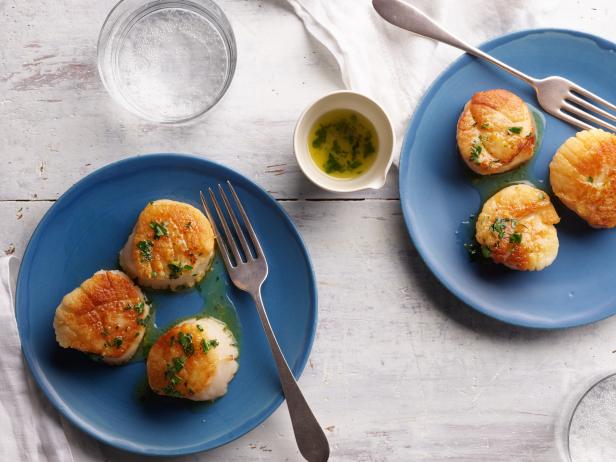
Tara Donne
Scallops and bacon are a surf-and-turf culinary match made in heaven. After bacon is fried up crisp-golden, the rendered fat is reserved to sear the scallops and add savory depth. The scallops are then finished in the pan and tossed with lemon zest and juice, parsley, and bacon pieces.

This no-cook method for making scallops draws from the Peruvian tradition of ceviche. Here, sweet bay scallops are marinated in lime juice, then tossed with a vibrant mix of olives, tomato, jalapeno, orange juice and parsley. It all adds up to an impressive but low-lift dish that’s the stuff of dinner party dreams.
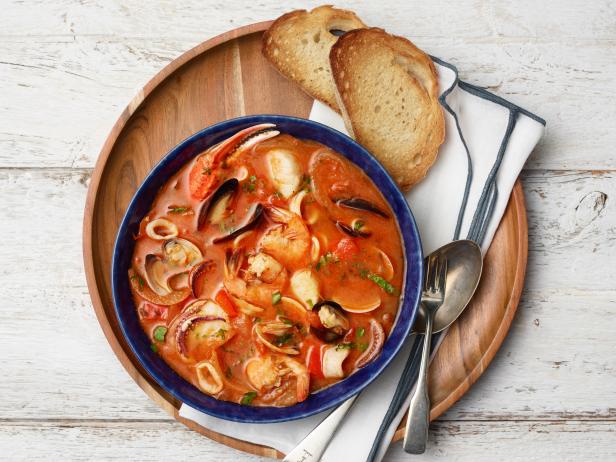
Renee Comet
This hearty tomato-based stew is brimming with fresh seafood. Quick-cooking ingredients, such as mussels, shrimp, squid and scallops are added near the end of cooking, with the scallops taking just 3 minutes to cook up firm-tender.
Related Links:























